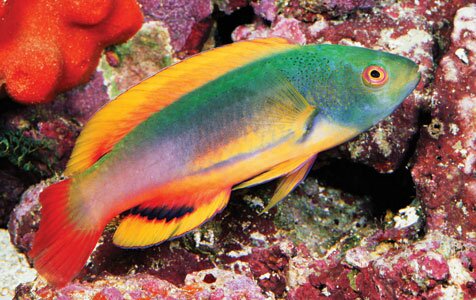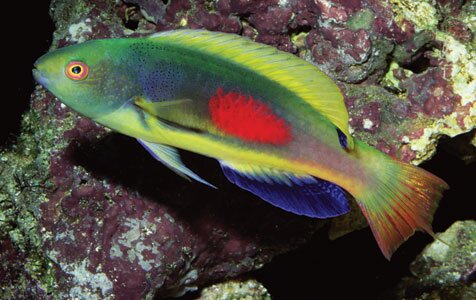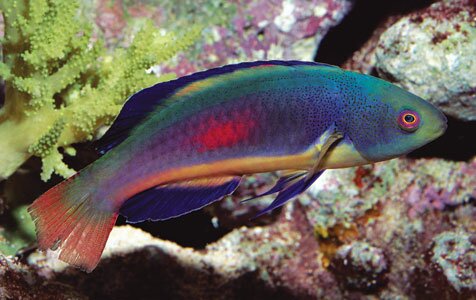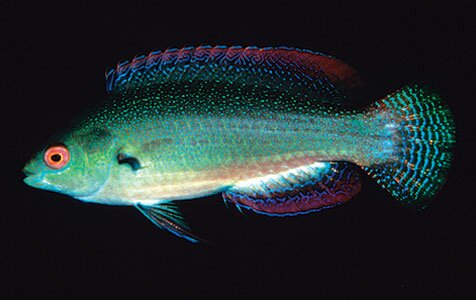Variations on a Fairy Wrasse Theme
From Microcosm Aquarium Explorer
- Scott's Fairy Wrasse, male displaying. Scott W. Michael
- Scott's Fairy Wrasse, same fish not displaying. Scott W. Michael
- Australian male. Scott W. Michael

- Tongan variant: like a human fingerprint. Scott W. Michael

- Cook Islands male. Note pinnate tail. Scott W. Michael

- Cook Islands specimen. Colors may fade if kept alone. Scott W. Michael
The highly variable Cirrhilabrus scottorum, Scott's Fairy Wrasse.
By Scott W. Michael Excerpt from Reef Fishes Volume 5
The colors of this popular and highly prized reef aquarium labrid is like a human fingerprint—no two are exactly alike, and many exhibit considerable geographical variations in color.
In general, Scott’s Fairy Wrasse males have a darker body than females, with blue and blue-green on the top of the head. Those individuals from the Cook Islands have a prominent red streak on the side, while in Australian individuals this characteristic is less pronounced. Juveniles are similar to the female but have a dark spot on the caudal peduncle, and rows of pinkish white spots along the side.
In the wild, Cirrhilabrus scottorum is most common on the fore reef in water ranging from 3 to 40 m (10 to 132 ft.). This species is typically found in small groups, consisting mainly of females and juveniles, which feed just above the bottom. The larger males will swim up to 3 m (10 ft.) over the bottom and display to females and rival males by erecting the dorsal and anal fins. I have also seen solitary individuals associating with shoals of Finespotted Fairy Wrasses(C. punctatus) in Fiji.

Scott’s Fairy Wrasse has a spine well in front of the dorsal fin above the eye that is erected when the males perform lateral displays.
The Blackmargin Fairy Wrasse (C. melanomarginatus) Randall and Shen, 1978 is most similar to this species. It is known from the Philippines, Taiwan, and southern Japan. It differs from C. scottorum in having a slightly shorter snout and a more oblique angle to the mouth, and in lacking the anterior yellow color on the front of the head and red caudal fin. It gets its name from the black margin along the dorsal fin. The Blackmargin Fairy Wrasse is the largest species, attaining a maximum length of about 15 cm (5.9 in.). Unfortunately, it rarely enters the aquarium trade. It occurs to a depth of 5 to 40 m (16 to 132 ft.).








